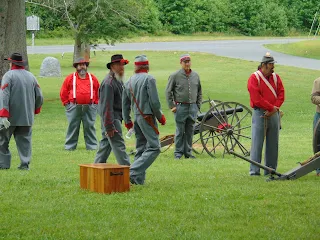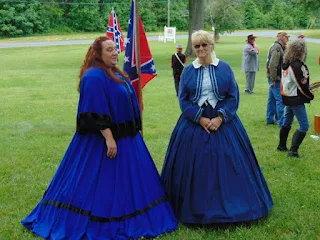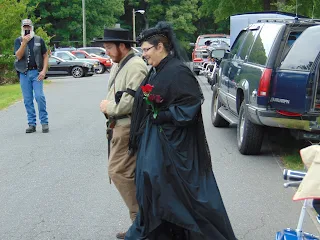 | |
| The Southern Black Racer (Coluber constrictor priapus). A subspecies of the Eastern Racer (Coluber constrictor) found in the Southeastern United States. (Photo courtesy of the blogger.) |
My front and back yards have played host to a number of species of local critters.
This is not counting the usual domestic animals like the feral cats that have taken up residence in my backyard, and now pretty much believe every time I use my back door it means "time to eat". Nor is it the rare stray dog that comes around looking for a handout. Nor is it counting the number of birds that use the bird feeders. Nor is it the squirrels and the occasional chipmunk that I've seen over the winter and early spring months.
Every now and again I get a deer that love chewing on my blackberry bushes. Sometimes a raccoon, or opossum (or a family of both) will show up late in the evenings to finish off whats left of stale bread I toss for the birds, or whatever dry catfood the ferals leave.
This morning though my front yard hosted a somewhat unwelcome visitor. A Southern Black Racer (Coluber constrictor priapus) used the bottom step of my front stoop as a place to get some sunshine before my presence caused him (or her) to beat a hasty retreat into the nearby bushes in the next yard. Not before I managed to get a good shot of the snake -- which I estimate to have been between 25 - 30 inches in length. Fully grown, these snakes have been known to reach full length of 36 - 60 inches (3 - 5 feet).
The Southern black racer is a subspecies of the Eastern Racer (Coluber constrictor). They are not strangers to suburban yards, and especially not to country yards....as I discovered. Despite the scientific term: constrictor, the Southern black racer doesn't actually wrap itself around its intended prey. The diet of the racer is usually birds, eggs, smaller snakes, rodents, frogs, and other lizards -- particularly the Carolina Anole. They are also quite fast, their speed earning them the name "racer" and are known to chase anything that they believe threatens them, so be cautious near them.
Unfortunately for this species, the non-venomous Southern black racer's close resemblance to the highly venomous Cottonmouth Water Moccasin (Agkistrodon piscivorus) causes people to kill them wrongly out of fear. The difference is that the venomous Cottonmouth has white inside its mouth. The Southern black racer doesn't breed with the cottonmouth, and in fact are known to drive away venomous snakes like the Copperhead (Agkistrodon contortrix).
Despite playing important roles as both predators and prey, snakes like the Southern black racer remain highly misunderstood vertebrates. These animals -- venomous and otherwise -- benefit humans with medications, antivenom, and rodent control. As such they deserved to be preserved through conservation efforts like any other threatened species.
Snakes are fascinating creatures that can be safely enjoyed by people....from a distance.
For more information about snakes in the Carolinas and Georgia, visit: www.heinrichecologicalservices.com.
For more information about snakes in the Carolinas and Georgia, visit: www.heinrichecologicalservices.com.







































































































































